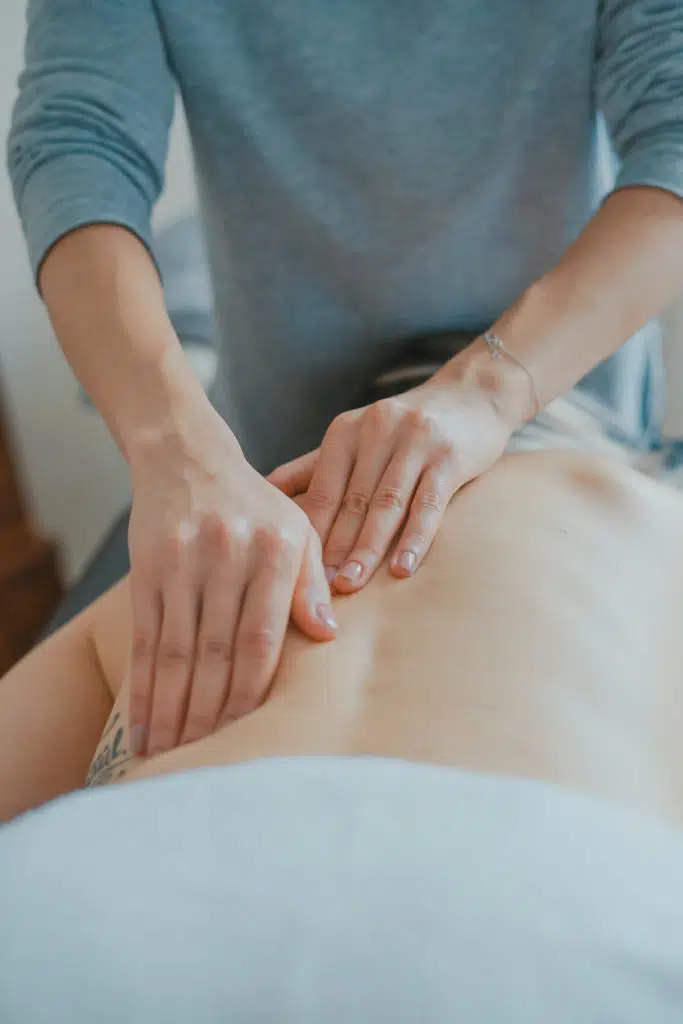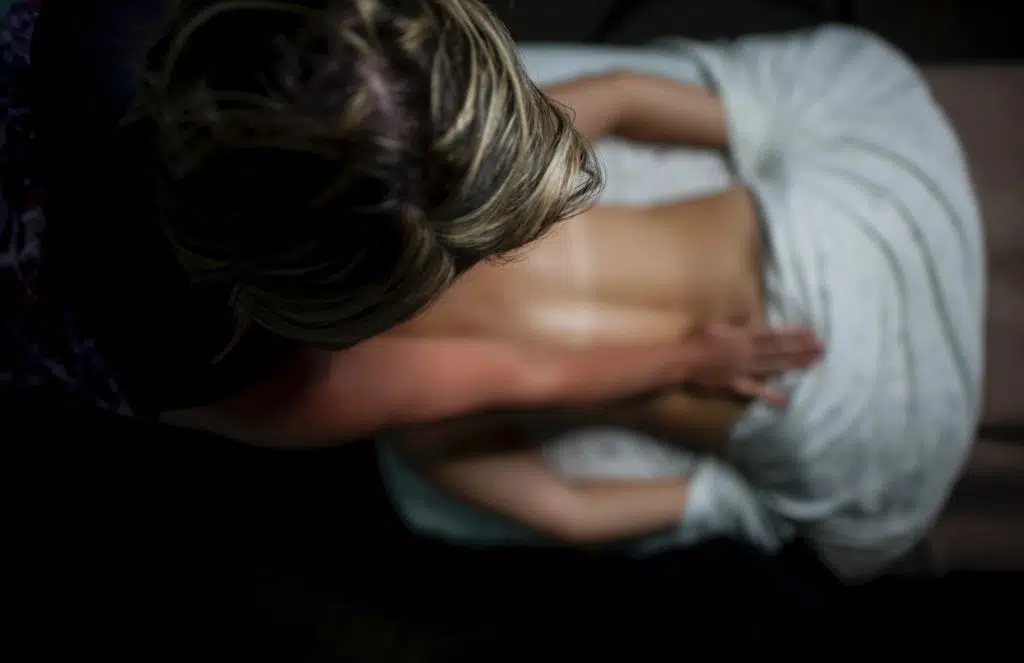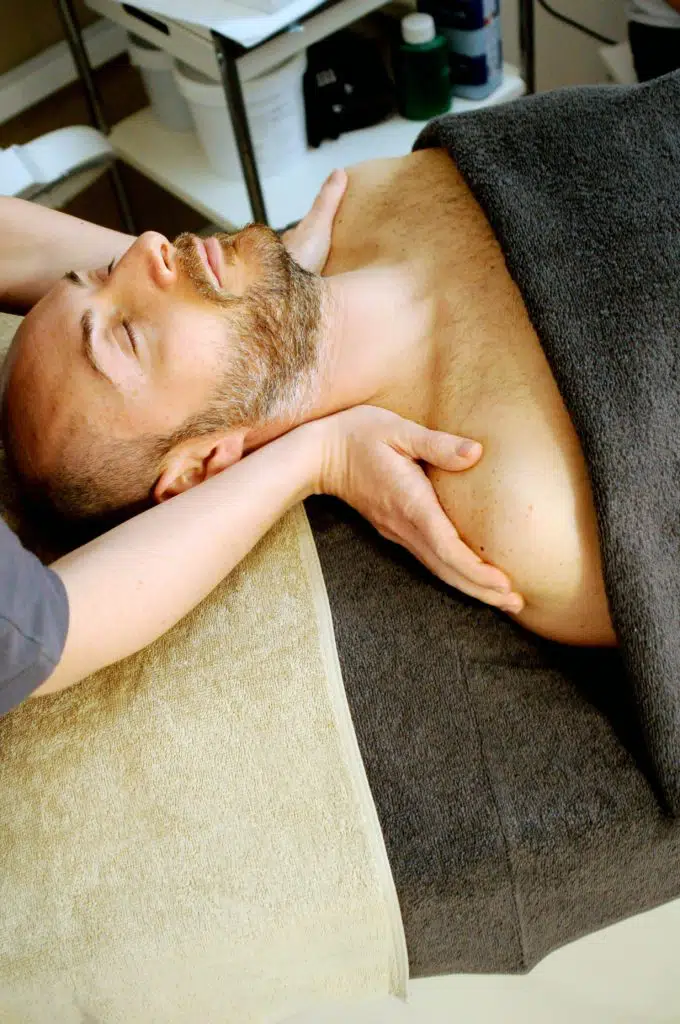Do you know what Lymphatic Drainage Massage is? And when should you get one? It's not just about relieving stress - this could be just what you need.
Understand what Lymphedema is…
The lymphatic system is a network of channels that carry lymph, a clear fluid containing immune cells to fight infection and other diseases. The two main functions of the lymphatic system are: to help eliminate toxic wastes from your body and to provide immunity by fighting pathogens. The Lymphatic System is one of the most misunderstood and undervalued systems in the human body. The lymphatic system is an important part of the immune system as it helps to filter out disease-causing agents and other toxins from the blood. Understanding this process can help us appreciate why we should get a lymphatic drainage massage. The definition of a lymphatic drainage massage is "a technique used to improve circulation and reduce swelling by improving the flow of lymphatic fluid."
Understanding how this system works and what it does for us can help us take better care of ourselves, which will result in us feeling healthier and happier. Read on to learn more about this important system of our body!
What is Lymphatic Drainage Massage?
Lymphatic drainage massage is a treatment that helps improve the flow of lymph fluid from your limbs back to your heart. Lymph fluid is collected in nodes and channels before traveling up to your heart, but sometimes this process can become sluggish or disrupted. The swelling is caused by lymph fluid that's collected in the soft tissues, due to genetic disorders, injury, infection, cancer treatment, or surgery. Some symptoms include pain, skin discoloration, tissue swelling, heaviness in the limbs, weakness, hardening or thickening of the skin, and recurring infections.
Lymphatic drainage massage has been shown to help reduce swelling and discomfort as well as increase the functioning of your immune system. It also helps remove excess fluid that may be contributing to lymphedema and other swellings. Lymph nodes are part of the lymphatic system, which is responsible for moving fluids from cells and tissues back into your bloodstream. Lymph nodes also help your body fight disease by producing white blood cells.

Benefits
Lymphatic drainage massage therapy is a form of bodywork that can be used to help your body maintain its natural fluid balance. It is a type of bodywork that helps to improve the function of your lymph system. Lymph fluid moves through the lymph nodes and eventually into larger vessels, which take it back to your heart. Lymph fluid contains white blood cells, so when your lymph nodes are working well, they can fight off infections in other parts of your body.
Lymphatic fluids are the bodily substances that carry infection-fighting antibodies, nutrients, and other important things from one part of the body to another. Lymphatic fluid is produced in tissues throughout the body and then travels through a network of vessels called lymphatics before being returned to the bloodstream. Lymphatic drainage massage helps stimulate this process by stimulating gentle, rhythmic movements in these vessels so they will drain properly. Some benefits you might experience after receiving a lymphatic drainage session are, it improves immune system function, decreases the feeling of fatigue, and increases the sense of well-being.
Types
These four types of lymphatic drainage massage are commonly used by massage therapists, physical therapists, and doctors.
Before getting a lymphatic drainage massage, the massage therapist will follow a particular sequence, using a series of massage techniques, including stretching, compressing, gliding, and cupping motions. Through this procedure, we can make sure you're receiving treatment from a trained professional.

When do I get one?
Lymphatic drainage massage is a type of bodywork that's becoming more and more popular in many different countries. LDM helps to reduce pain, increase mobility, and improve the quality of life for anyone who has experienced trauma or surgery. LDM can help with chronic conditions like rheumatoid arthritis, fibromyalgia, and lymphoma. LDM can also be used as an adjunct therapy for cancer patients undergoing chemotherapy treatment.
Lymphatic Drainage Massage’s are also great because they help reduce pain caused by inflammation due to arthritis, injury, or surgery.
How to perform a lymphatic massage
People can receive lymphatic massages from trained professionals, or they can learn basic drainage techniques to use at home. However, it is best to speak to a doctor before either trying this at home or going to a professional.
People can perform most of these exercises either standing, sitting, or lying down, as long as they are comfortable.
Keep the following tips in mind during a lymphatic massage:

How to prepare
The following methods will stimulate the lymphatic system and prepare the lymph nodes to bring in more fluid before a lymphatic massage.
1. Lymphatic breathing
Deep breathing acts like a pump that helps move fluid through the vessels and lymph nodes. Follow the steps below:
2. Prepare the front of the neck
Place the index and middle fingers of each hand on either side of the neck, slightly above the collarbone.
Stretch the skin by gently sliding the fingers inward toward the middle of the collarbone.
3. Prepare the side of the neck
Place the palm of each hand on either side of the neck below the ears.
Slowly move both hands down and back.
4. Prepare the back of the neck
Place the palms of the hands on the back of the neck near the hairline.
Gently slide the hands together down the neck toward the spine.
5. Prepare under the arms
Prepare the lymph nodes under the arms to help them accept lymph fluid from other areas of the body. Do not perform this movement on areas that doctors have treated for cancer. Follow these steps:
Cup the palm under the armpit.
Gently pump the palm upward and toward the body.
Repeat on the other arm.
6. Prepare behind the knees:
Place both hands behind the knee, so the fingers point toward each other.
Pump the back of the knee by gently pressing the hands into the back of the knee and rolling them upward.
Repeat on the other knee.
Upper body massage techniques
Use the following techniques to help drain lymph fluid from the chest, shoulder, and upper arm.
To massage the chest:
Place the palm flat on the opposite side of the chest, slightly above the breast.
Move the hand up the chest and over the collarbone.
Continue up the neck until the skin covering the chest feels tight, then release.
To massage the shoulder:
Rest the arm on a table or armrest.
Place the other hand on the shoulder of the resting arm.
Move the hand over the back of the shoulder and toward the neck.
To massage the upper arm:
Rest the arm on a table or armrest.
Place the middle two fingers of the other hand on the inside of the upper arm below the shoulder.
Gently slide the fingers toward the outside of the upper arm.
Wrap the hand around the outside of the upper arm.
Gently move the hand back toward the inside of the arm.
To massage the full-arm:
Begin at the shoulder.
Use the palm to stretch the skin upward.
Move the hand down to the upper arm and stretch the skin up toward the shoulder.
Continue down the arm always moving the skin upward.
Stop at the wrist.
To massage the fingers:
Start at the base of the swollen finger close to the palm.
Use the index finger and thumb to stretch the skin on the finger toward the hand.
Continue this motion over the entire finger.
Remember to direct fluid toward the hand.
Lastly, let us understand if there are any risk factors around Lymphatic drainage massage:
Generally speaking, lymphatic drainage massage is a safe treatment to relieve lymphedema. There are some conditions and circumstances where lymphatic drainage massage is not recommended:
It is best to consult your healthcare provider if you’re concerned your physical health might be affected by a lymphatic drainage massage.